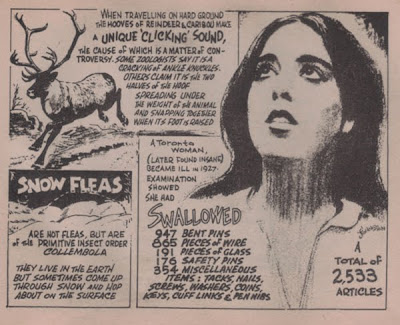
This blog began ten months ago with a modest piece on Sailor's Leave, the Brian Moore novel first published by Harlequin as Wreath for a Redhead. "It's a very small secret", I wrote at the time, "that between 1951 and 1957 Moore published seven pulp novels." Today, having spent much of the morning surrounded by Canadian reference books, I'm beginning to reconsider my words. The Canadian Encyclopedia doesn't mention them, nor does The Oxford Companion to Canadian Literature. Reference works that do recognize Moore's pulps cock things up completely. Here, for example, is John Robert Colombo writing in his 1000 Questions About Canada:
The distinguished novelist Brian Moore did not write Harlequin Romances, but in 1951, while still a newspaperman, he wrote a number of suspense novels that were published by Harlequin Books. They are Wreath for a Redhead and The Executioners.Information is not plentiful, but it seems Moore wrote other novels for Harlequin. Their titles are sometimes given as This Gun for Gloria, French for Murder (as Bernard Mara), Intention to Kill [sic] and Murder in Majorca (as Michael Bryan). It seems in 1952 Pyramid Books published yet another Moore pot-boiler, titled Sailor's Leave.
I don't think Colombo really meant that Moore wrote all his pulps in 1951 – they were produced over a six-year stretch that began in 1950 – and so, put this morsel of misinformation down to sloppiness. But what of the rest? None of the "other novels" were published by Harlequin, and Sailor's Leave, published in 1953 (not 1952), was nothing but an American reissue of Wreath for a Redhead. Contrary to Colombo's claim, information is plentiful and the titles are well-documented – as they were in 2001, when 1000 Questions About Canada was first published. As with any research, the trick is knowing where to look. Let's start with Denis Sampson's fine biography Brian Moore: The Chameleon Novelist, which includes this handy page:

The very same information can be found elsewhere, which makes Colombo's writing all the more disconcerting. This is, after all, a man whose career was built in large measure as Canada's go-to guy for reference works. I don't think I'm making too much of a fuss; this is the second time I've consulted Colombo in writing this blog, and it is the second time his information has shown itself to be incorrect.
Enough. I promised myself that October would be dedicated to writing that brings in money. The next week or so will feature nothing but images of Moore's pulp novels. Enjoy!
Related posts:












.jpg)
.jpg)
.jpg)























